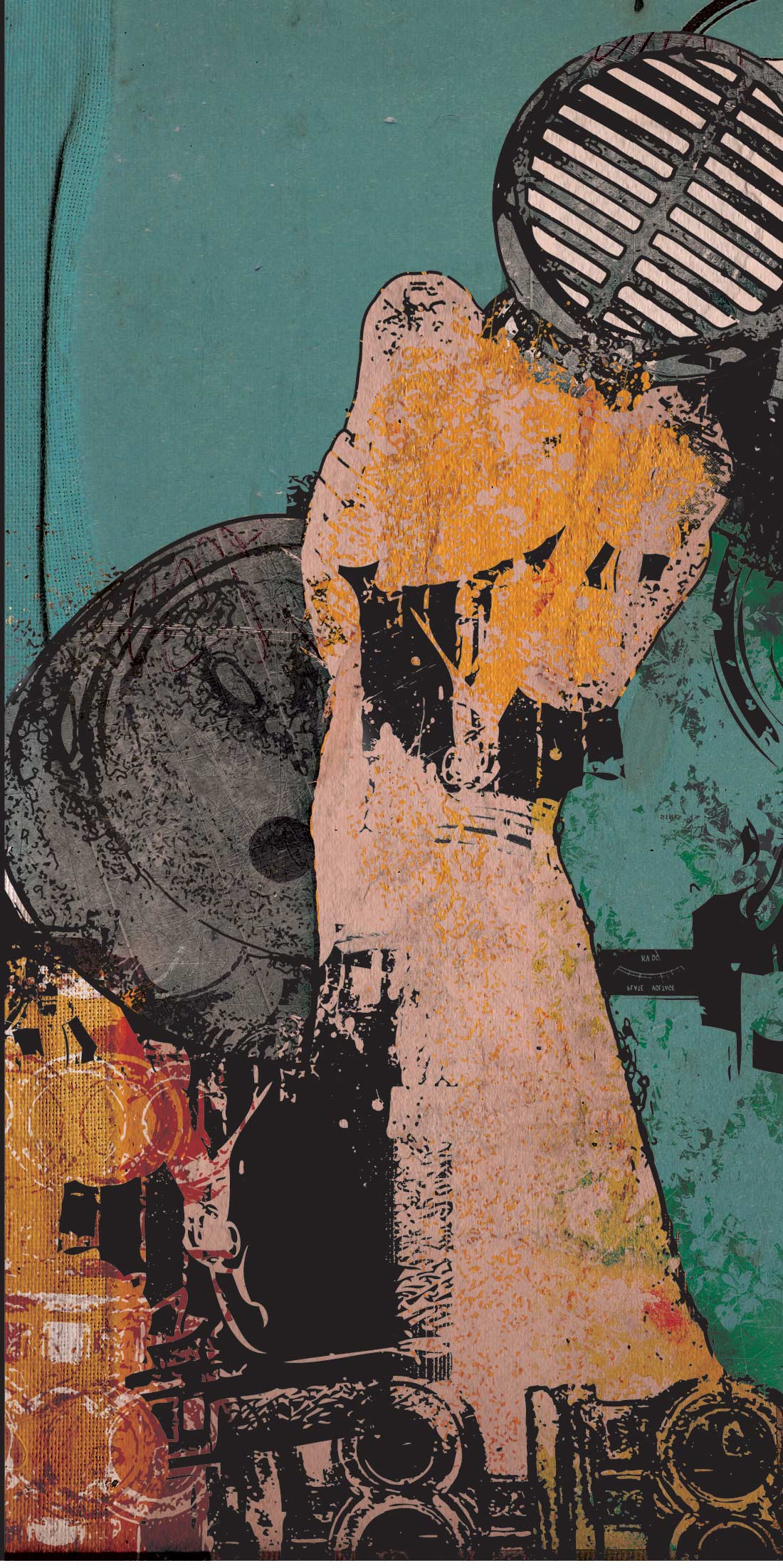So we were strolling around AES last October and we run into Harley Fine who we met at TapeOpCon 2007. Harley took us over to meet Jim Kaye of Matrix Audio Systems. At his table were three 2-channel microphone preamps: the TO-2, the HO-3, and the LF-1. While the appearance of all three is identical, what is under the hood is not. The HO-3 is a more modern design using their 1205 op-amp circuit and has transformers in and out. The LF-1 is all discrete with no transformers. The TO-2 is also discrete, uses transformers, and is based on their version of the 1021 op-amp. Without knowing any of this at the time, we put on some headphones and listened to all three using the same microphone. While the background ambience of a busy convention floor is not the best source for critical evaluations, we decided we liked the middle unit the best. It seemed to impart more of the smooth sound we prefer, and as it turned out, we had selected the TO-2. Jim asked if we'd be interested in reviewing the preamp, and of course we said yes.
When we received the TO-2, we racked it up, patched it in, and set it up for the next day's session with acoustic guitar and vocal. One of the first things we noticed when racking the TO-2 was the very heavy-duty 2RU-height chassis and simple front-end layout. Each channel includes phantom power, a pad, a phase switch, and a gain knob. There are no meters or peak indicators. Now we know the best meters are on the sides of our heads, but we were disappointed not to see a VU on this unit as we like the ability to see where an overload is occurring in the signal path when we do hear distortion or even just verify that there is incoming signal. But hey, our V76 has no meters either and that has never stopped anyone from using or loving it.
We got to the studio the next morning and mic'ed up the client's acoustic guitar with an AMR-2 small-diaphragm condenser a little back and down from the bridge and an inch or two away from the guitar top. We also used a Neumann U 87 large-diaphragm condenser about 20" back, placed halfway between the 12th fret and the sound hole, and slightly turned in toward the sound hole. We never exceeded 10 o'clock on the gain setting with the Matrix TO-2. The mic at the bridge position sounded surprisingly full without the high-frequency harshness we sometimes get with this placement. We also didn't get the low-end pumping from the large-diaphragm mic that we often get when recording these "high end" acoustic guitars. In the end, we used just the track with the small-diaphragm mic in the final mix, and it cut very well through our client's thick and folksy voice. While the TO-2 was nice and clean with plenty of gain, it still added a nice color to the signal. It reminded us of the way our JH-16 record cards add that iron to the signal. That is probably why we gravitated towards its sound when we first heard it on that noisy AES show floor.
A few days later we got the opportunity to try the TO-2 on an opera session with grand piano and solo voice. This was done up at Scottsdale Community College during our Saturday Recording 2 class. The school is a little light on outboard gear, so having the TO-2 was a welcome addition. Because of the bleed from the tenors' voice, we used a pair of KM 184 small-diaphragm condensers fairly close and off-axis to the strings of the piano. It wasn't as squeaky clean as our Millenia Media HV3C or True Systems P2analog we normally use, but the sound of the piano through the Matrix was natural, detailed, and linear. It really captured the character of the piano and handled the full-frequency attack of the composition beautifully and smoothly. Despite some other technical problems during the session, the classically-trained pianist was appreciative of the way the piano was recorded, which helped to keep the singer calm.
So far, we had not even begun to push the gain very high with the condensers, so we knew we needed to try the TO-2 with some passive ribbons. Our Royer R-121 is the go-to mic for many tasks, and we especially enjoy it on acoustic guitars. The next week, we were recording an acoustic duo performing together for the class session. The trick to using passive ribbons is you need mic preamps with lots of gain and low self-noise. It can take all 60 dB of gain available to get a nice hot signal, especially on acoustic instruments. Once again, the TO-2 was up to the task. We were able to twist that bright-yellow, chicken-beak knob right up there to almost its full range and never had any problems. The mic was full and responsive, and we did not hear any hum or buzz from the high amount of gain we needed. In fact, the TO-2 added some nice harmonic top end to the ribbon's signal that really brought out the "zing" of the picked leads. It was the perfect complement to the R-121.
In the ever-growing boutique mic preamp arena, it can be difficult to get noticed when there are so many choices, but Jim Kaye is taking the plunge. By offering three robust preamps, his first three products are obviously built by a studio engineer for studio engineers. There is nothing fancy, just good-sounding reproduction that complements your microphones and is easy to use at an affordable price. We look forward to seeing what else Matrix Audio Systems brings to market. ($1595 MSRP; www.matrixaudiosystems.net)
Tape Op is a bi-monthly magazine devoted to the art of record making.




_disp_horizontal_bw.jpg)